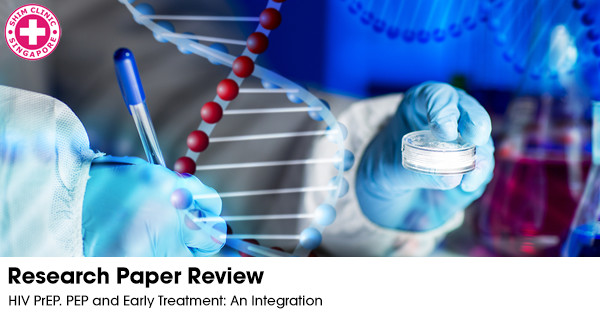With advancements in the field of research and scientific probing, we are continuously getting better treatments and vaccinations for different diseases. Although, there are currently no vaccines which can prevent HIV, scientists have been able to formulate the next best thing – HIV Pre-exposure Prophylaxis (PrEP). A report by the Center of Diseases, Control and Prevention compiled the recommendations and loopholes in the HIV research from published data on PrEP and HIV Post-exposure prophylaxis (PEP) to find a set of best practices for integrating these 2 highly effective HIV infection prevention methods.
Two effective regimens for the prophylaxis of HIV are PEP and PrEP. PEP is administered to individuals who have been exposed to HIV within 72 hours of exposure. Although, ziduvidine alone is effective in 80% of the time if administered within initial 72 hours, a 2-3 drug medication is recommended by the US Public Health Service in 2013. PrEP, on the other hand, is recommended for people who are living a high-risk sex life, even for those who are already on PEP and have been tested HIV negative. PrEP medication usually includes emtricitabine/tenofovir didoproxil fumarate and is effective in high-risk patients. In contrast, an early treatment regimen is offered as soon as the patient is found to be seropositive after exposure.
According to this report testing for HIV is still critical. HIV testing is recommended in all the cases especially when there is known or suspected exposure to HIV even when on a PrEP regimen.
The key element for the decision to start PrEP, PEP or early treatment after an exposure is dependent upon the antibody titer. Unfortunately, this test is not a good indicator for acute HIV infection where HIV RNA testing is recommended instead. The report says that HIV antibodies might not be detected using the antibody test during an early Acute HIV infection thus resulting in false assurances to the indivdual. This may lead to HIV-positive individuals starting on PrEP which may lead to drug resistance. A 4th generation test for HIV p24antigen can help if the test for HIV RNA is not available. This test has an advantage over 3rd generation and 2nd generation tests as it can detect HIV antibodies way earlier. Furthermore, the report suggests that the signs and symptoms can also guide the physician towards making a decision about acute HIV infection. Fever, myalgia, fatigue, skin rash and headache are common complaints in people with acute HIV infection.
According to the report, for individuals with a significant history of exposure, PrEP should be started even without the results of HIV testing. A single drug for PrEP and a three-drug regimen is recommended for PEP in US. After the completion of a HIV PEP regimen, it is recommended to start PrEP in people engaging in a high-risk sex life e.g. people with multiple sexual partners. The recommended test after 4 weeks of PEP is the 3rd or 4th generation HIV test as HIV RNS testing might be suppressed with a prophylactic treatment of HIV.
For PEP treatments, HIV testing is recommended at day 0, day 28 and 3 months after PEP. In the case of PrEP, testing is recommended at the start. Another test can be done after the first month on a PrEP treatment. Anyone on either PEP or PrEP treatment should be quickly started on early treatment if their blood shows seroconversion.
Source:
Grant M. R. and Smith K. D. Integrating antiretroviral strategies for HIV prevention: post- and pre-exposure prophylaxis, and early treatment. Open Forum Infectious Diseases Advance Access, 2015.

